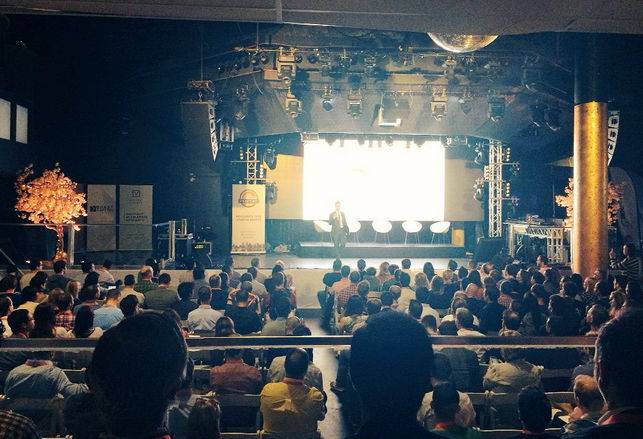Most attendees at this year’s two-day Traction Conference in downtown Vancouver probably came away with two emotional responses: first, excitement from knowing exactly what they need to do to grow their startup with the latest tech tools and tricks; second, the stress of knowing they have to do it, fast. Many companies are already getting on with the business of marketing automation, machine learning, and growth hacking. It’s a rush for riches out there – and getting traction fast is the name of the game. Here’s a quick tour of some of the highlights from this event:
Big is beautiful
Justin Kan, Partner, Y-Combinator & Co-founder, Twitch.tv, talked about how he got his start in the early days of the dotcom craze, making a live streaming show about himself. He and his team needed to pivot fast when they realized nobody cared to watch him during the inevitable boring bits. Switching to a business model of letting people create their own content – and again, switching to a focus on hosting gaming videos, they finally found success with Twitch, selling it to Amazon for $970 million.
“The Internet tends companies towards a monopoly.”
Scale has a power all its own when you want to attract big partners (or potential exit opportunities). “The Internet tends companies towards a monopoly, where they can drive a lot of users to it, using existing bases. Every company is looking for big things they can drive adoption to, whether it makes sense on the surface or not.”
Using data to drive smart growth
Technology-driven businesses today basically have two options, says Heather Zynczak, Chief Marketing Officer of Domo: “grow fast or die slow.” To get the happy ending, startups need to make sure their sales and marketing are integrated from the beginning; as well, they need to be data-driven, focusing on profit, not just revenue.
“We’re drowning in data but we’re thirsty for information,” she says. “Companies can’t just collect data – they need to analyze is and generate reports that people can actually use to take action.
It’s a mobile world, so get a move on
In her talk on “Harnessing Digital Transformation to Create Business Growth”, Hootsuite CMO Penny Wilson pointed out how the devices in our pocket are critical to our lives – and thus, critical for businesses to factor into their strategies.
If we live on our smartphones, then companies need to find us where we live.
“Mobile is the defining trend of our age. Anyone not have a phone in their pocket or purse – or have a complete meltdown if you lose it? How many of us reach for it before we even get out of bed in the morning?” If we live on our smartphones, then companies need to find us where we live.
A bit counter-intuitively, she also suggested that social marketing and sales are too critical to be left to the marketing and sales departments. “You need to engage with your audience across your entire organization to create meaningful engagements at scale… Monitor the social networks, listen to the social conversation and then arm more than just your one social media manager with these tools.”
Tech helps you build a revenue engine – but that’s not all you need
Uberflip VP of Marketing Hana Abaza kicked off her talk by noting that all kinds of companies are struggling with the challenge of building and optimizing their revenue engines – and while startups may be nimble, their lack of experience can hold them back where more mature companies can actually make good headway. “Startups broadly speaking are in a Wizard of Oz phase where they’re following the yellow brick road, but don’t look behind the curtains,” she said. “There’s no process.”
If you make it over those early hurdles, you might transition to a Scoobie Doo phase, where you have a team, you’re sort of figuring things out, but you don’t really know what you’re doing even if you’ve got some process in place. Then you enter the Ocean’s 11 phase, where your team is on the ball, coordinated, and knows its stuff.
Broadly speaking, these kinds of experienced teams have figured out what startups might not understand: the sales funnel isn’t linear, people don’t go through it just the way you want them to. To counterbalance that, companies need to use technology and processes to become more efficient. “That’s not just at the top of the funnel. It’s about making sure people in your organization understand what marketing is doing, they all know what the funnel looks like and sales and marketing are coordinated.”
Now what?
Coming away from the Traction Conference, the most commonly-heard phrase from attendees – some glowing with inspiration, some almost shell-shocked from information overload, was “I’ve got so much I have to do now.” Perhaps just showing up at this event was a sign that they’re already on their way to getting ahead.


